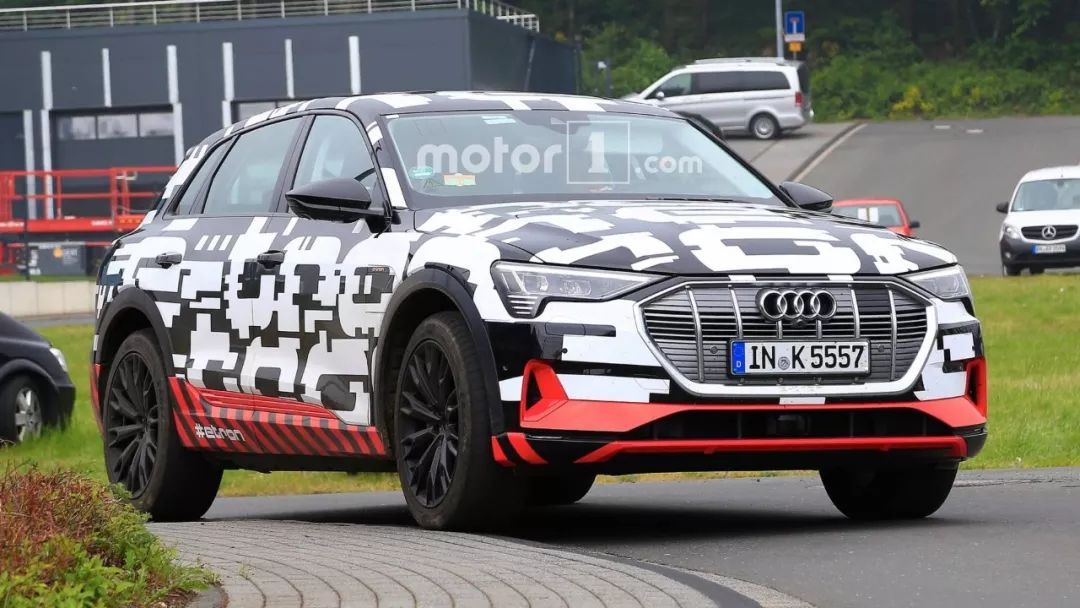Recently, overseas media exposed spy photos of Audi’s first pure electric vehicle, the e-tron quattro.
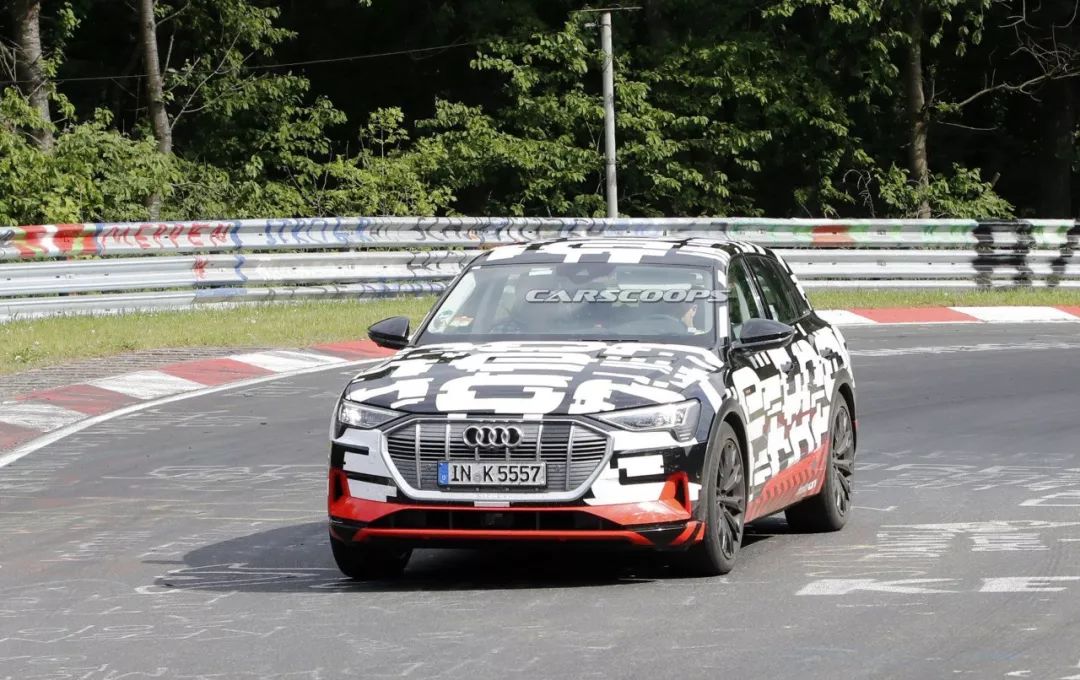
This time, it is a photo of the production prototype being tested on the road, which is different from the previous promotional photos taken around the auto show. It may be the last warm-up before the official debut.
Similarly to Mercedes, the Audi e-tron quattro has completed winter testing in the past winter and released a short video. It also released the latest spy photos in sync with the Mercedes EQC.
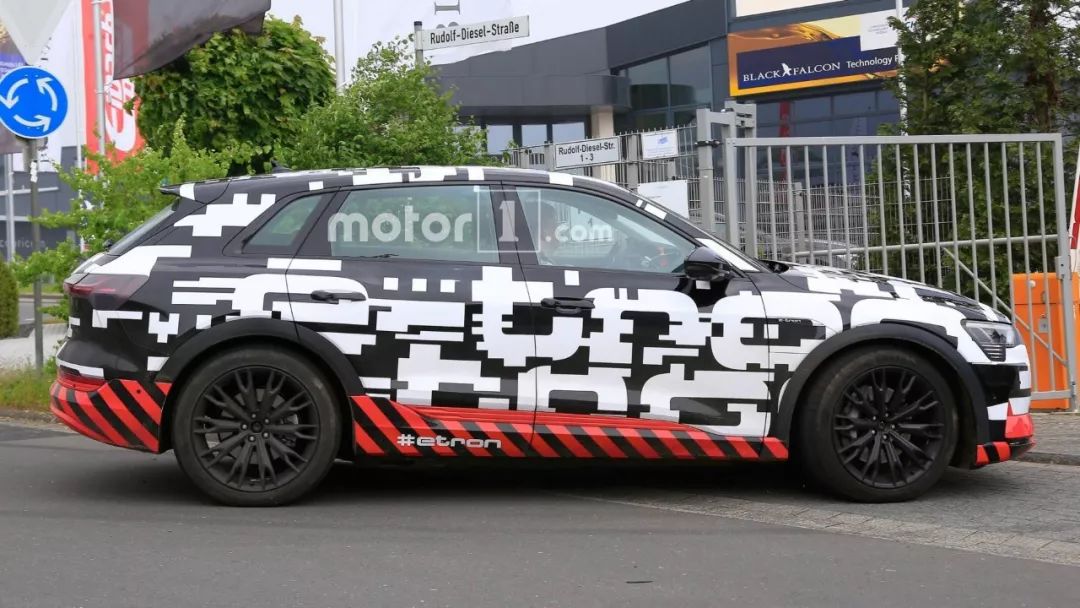
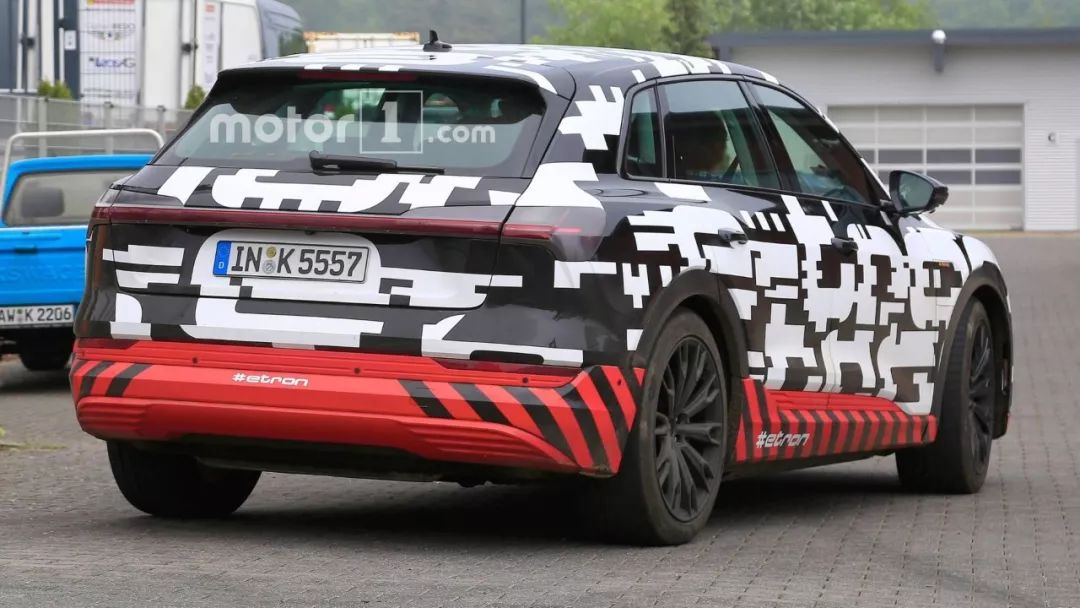
We have mentioned the Audi e-tron quattro before. As early as in the 2018 summary of the most anticipated models, the boss lady mentioned the competition between the Jaguar I-PACE and the Audi e-tron quattro. Compared with ordinary cars, the exploration of luxury cars in electrification is more exciting.
Come on, let’s meet in August
First, let’s take a look at the basic information about this car.
A new piece of information
The Audi e-tron quattro in the production version will officially debut on August 30th at the Audi Summit in Belgium, with a starting price of 96,000 euros, or approximately 114,000 US dollars.
Core parameters
-
Vehicle dimensions: 4.88 m * 1.93 m * 1.54 m
-
Platform: Built on the same platform as Porsche Mission E
-
Battery: 95 kWh battery pack, achieving a range of over 400 kilometers under EU WLTP conditions
-
Motor: Low-end dual motors; high-end three motors (single front motor and dual rear motors), with a power of 320 kW
-
Acceleration: 4.6 seconds per hundred kilometers
-
Maximum speed: 210 km/h
-
Charging: Fast charging of 150 kW, slow charging of 11 kW (optional 22 kW), home charging of 2.3 kW, slowest charging of 8.5 hours to full, supporting wireless charging
-
Charging network layout: High-power charging stations will be built in Europe, and it is expected that Europe will have nearly 200 high-power charging stations (HPC) with six charging points at each station by the end of this year. In addition, Audi is also a core member of the 350 kW fast-charging alliance Ionity.
Next Step
-
Audi has invested more than 40 billion euros in electric vehicles and plans to launch at least 20 electric and hybrid vehicles with sales of about 800,000 units by 2025.
-
The second pure electric vehicle, e-tron sportback, will be launched in 2019, and e-tron GT will be launched in 2020, both of which will be produced in Audi’s Brussels factory.
After reading about its hidden face and basic parameters, don’t rush, the introduction of this car is not over yet.
Good Looks and Confidence
In 2015, Audi showcased the concept car of the e-tron at the Frankfurt Motor Show, while the prototype of the Audi e-tron quattro was unveiled at the Geneva Motor Show in March 2018.
Although we can’t see the production car for now, let’s review the appearance and interior of the prototype.
This is the e-tron prototype that has appeared multiple times in media content.
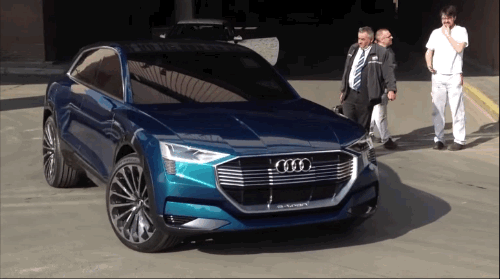
Take a closer look at the headlights.

Look at the interior screen, please note the triangular screen in the upper right corner, which is a monolithic design effectively integrated with the center console.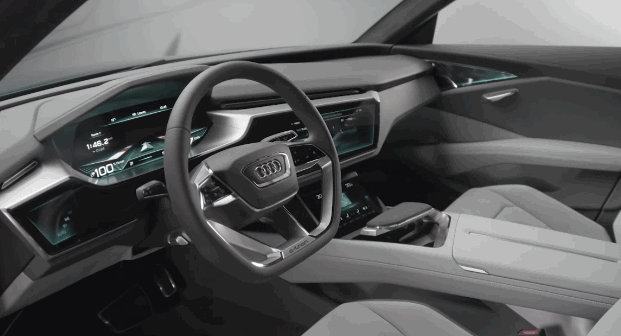
Camera after the door handle extends.
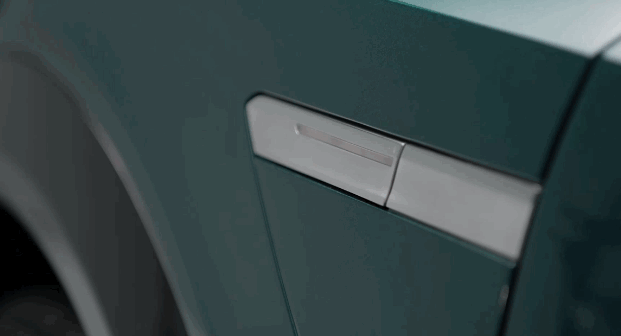
There is also a curved screen in the back.
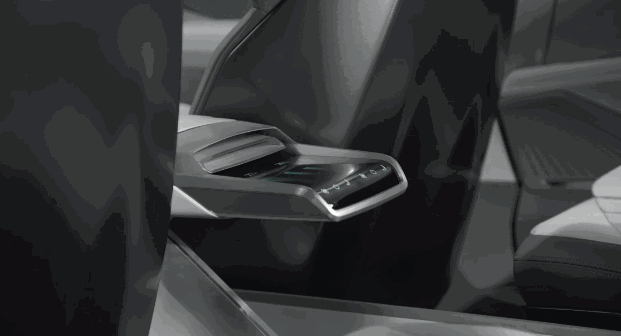
Well, these designs were already present two years ago. However, this does not mean that they will appear in the production version.
After superficially looking at the photos, let’s talk about the battery in the car.
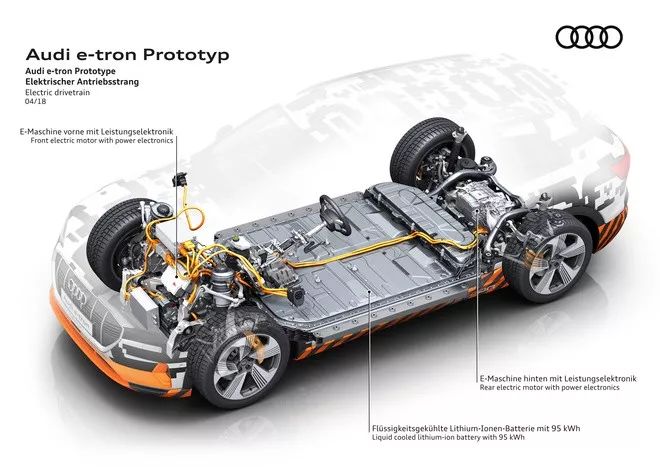
Audi uses soft pack battery cells in this car, with a total of 36 modules, 432 cells, and a weight of 715 kg. In an interview, Audi executives mentioned that soft pack battery cells have more advantages in terms of price and are more conducive to the cooling of the battery. However, they do not rule out the application of both soft pack and rugged shell battery cells in the future.
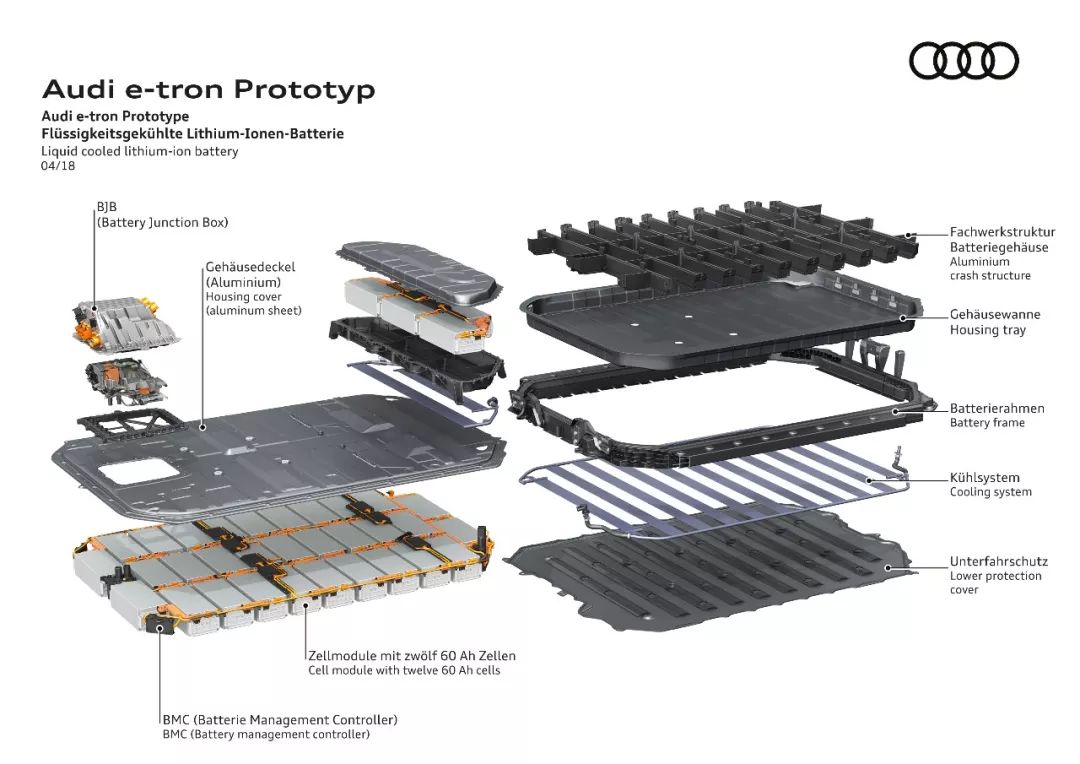
However, the battery pack in this car is managed at the module level, and cooling is not done at the cell level like in General Motors. The picture shows the typical sandwich structure of soft pack battery cells.
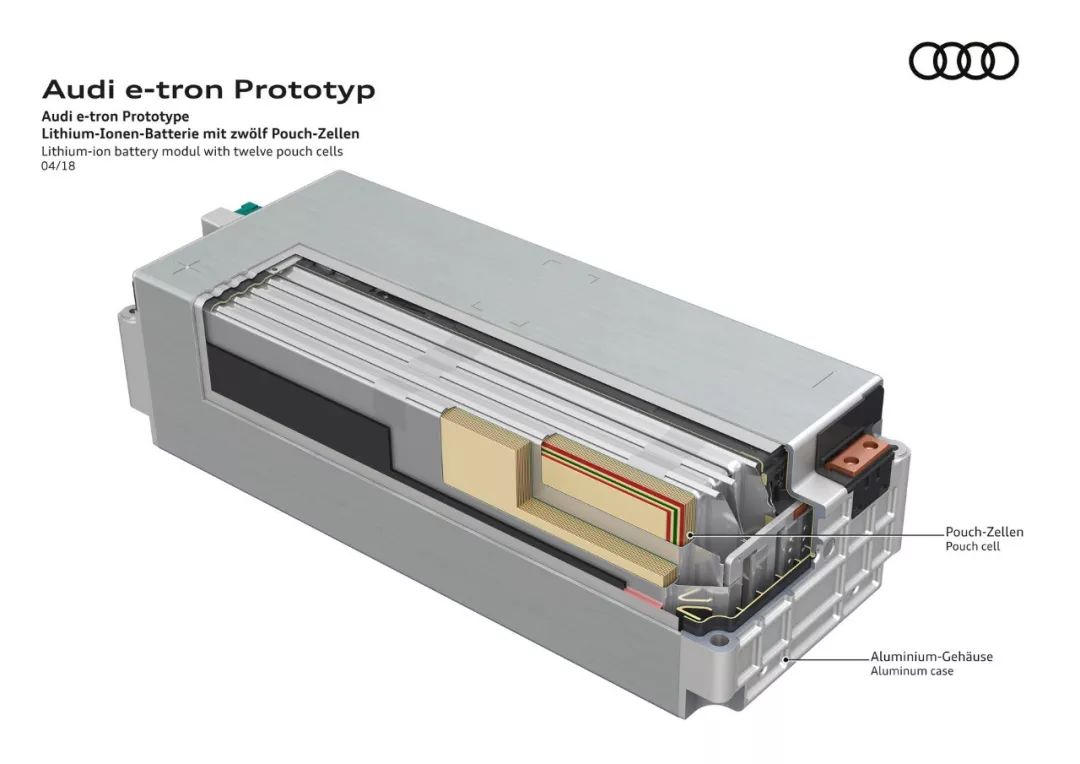
This is a picture of the actual battery module.
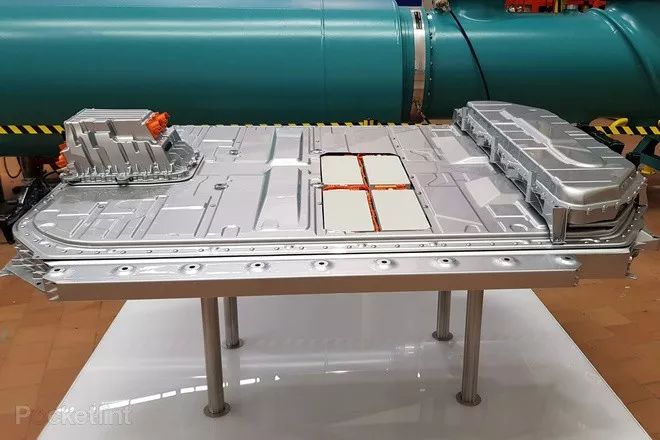
It satisfies the charging conditions of both fast and slow charging.
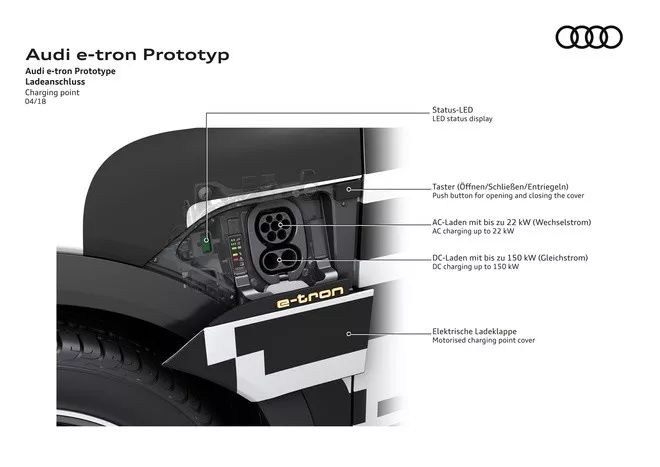
Of course, the most confusing thing is that Audi is also a 350 kW fast charging supporter. Compared with this, Tesla is more inclined to long endurance rather than fast charging. There are different technological routes between traditional automakers and Tesla, from battery cells to grouping, and finally to charging, and we will continue to pay attention.
See you in August!


This article is a translation by ChatGPT of a Chinese report from 42HOW. If you have any questions about it, please email bd@42how.com.
